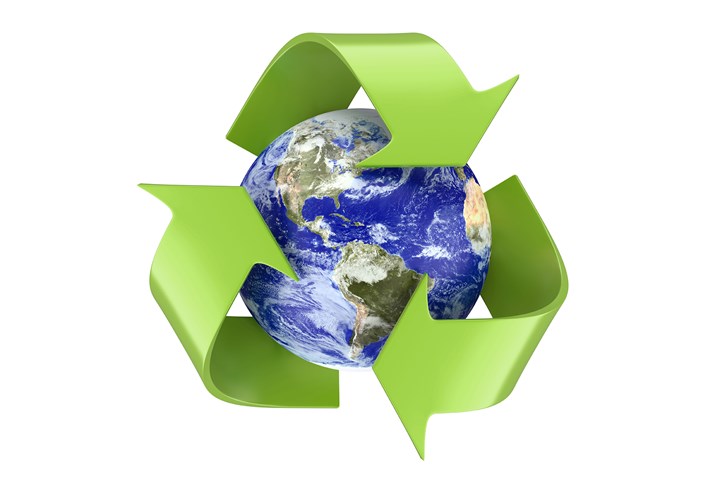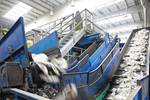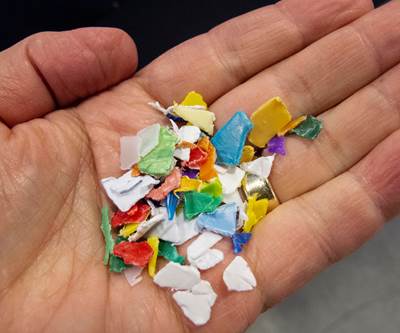The ‘Three Rs' of Sustainability: Are They All Equal in Priority?
Reduce, Reuse, Recycle—Which of these is most accessible to more manufacturers in the near term?

Everyone has heard of the “Three Rs” eco-responsibility—for plastics and everything else: Reduce, Reuse, Recycle. Lately, the third “R” is getting all the attention.
In this magazine, we have conveyed a steady stream of information on what plastics processors can do about Recycling:
• They can learn how to use—or make better use of recycled materials in their processes. For example, there’s an important feature in our upcoming September issue on eight questions to ask when you are specifying a PCR material. We’ve highlighted processors like AGS Technology that have devised a business model based on using recycled raw materials.
• They can help advise their customers—the brand owners and OEMs—on how to Design for Recyclability, a new subset of the concept of Design for Manufacturing (DFM). You might even call it Design for Remanufacturing.
• And, processors themselves can become involved directly in recycling. We’ve written about plastics processors that have their own recycling operations, ranging from global packaging giants like Graham Packaging, ALPLA, Coca-Cola and UFlex to firms like Revolution and Hilex Poly, which make—and recycle—films, bags and tubing for consumer, agricultural and construction uses.
But that’s only one “R” and not necessarily the one our readers think of first. I recently attended a virtual presentation of technology updates by SACMI, the Italian builder of injection, blow and compression molding machinery for packaging. The bulk of the presentation was devoted to new technologies—in machinery, resins, and additives—for thinwalling and lightweighting, with a particular focus on pharmaceutical packaging.
SACMI personnel also provided an interesting argument about the Three Rs, with regards to the pharma market:
• “Reuse” has little or no applicability to pharma or food packaging, for safety reasons.
• “Recycle” is relevant, but requires substantial investment in both civil and industrial infrastructure for plastic waste collection, separation, and treatment.
• That leaves “Reduce”—as in thinwalling and lightweighting—as the only immediately available solution to sustainability goals. This is something that product designers, packaging engineers and plastics processors and toolmakers can execute right now, without any dependence on enactment of legislation, on efforts to change consumer behavior, or investments by third parties in waste collection and amelioration. It also does not depend on plastic molders and extruders adopting unfamiliar technologies for washing, grinding and reprocessing post-consumer plastic waste.
To some extent, that conclusion may seem obvious, but I myself haven’t seen it stated so clearly and explicitly before. And I think it’s an important conclusion, because it points a direction for a large proportion, perhaps a majority, of plastics processors to look for their near-term contribution to sustainability. Of course it’s true that many processors are already using recycled plastics, and many more will be before long. Current PCR supply limitations and high prices are hopefully temporary. But adopting and recommending technologies—in equipment, tooling, resins and additives—to achieve source reduction is something that a larger proportion of processors can pursue right now without major changes to their operations.
And guess what? Thinwalling and lightweighting make their own case in cost reductions and productivity increases—good old-fashioned economics that don’t require any new “green” persuasion. It’s the same motivation that already has cut the thickness and/or weight of consumer bags and beverage bottles by 50% or more in the last 30 years or so. It’s something that everybody can get on board with.
Related Content
How to Optimize Injection Molding of PHA and PHA/PLA Blends
Here are processing guidelines aimed at both getting the PHA resin into the process without degrading it, and reducing residence time at melt temperatures.
Read MoreAvoid Four Common Traps In Granulation
Today, more than ever, granulation is an important step in the total production process. Our expert explains a few of the many common traps to avoid when thinking about granulators
Read More‘Monomaterial’ Trend in Packaging and Beyond Will Only Thrive
In terms of sustainability measures, monomaterial structures are already making good headway and will evolve even further.
Read MoreScaling Up Sustainable Solutions for Fiber Reinforced Composite Materials
Oak Ridge National Laboratory's Sustainable Manufacturing Technologies Group helps industrial partners tackle the sustainability challenges presented by fiber-reinforced composite materials.
Read MoreRead Next
Global Bottle Maker Commits to Major Boost in Recycling
ALPLA Group multiplies its recycling investment by a factor of five.
Read MoreWhy ‘Plastic Wars’ Got Me Riled
Is plastics recycling a decades-old scam or fraud? New PBS documentary takes a myopic view of broad-based industry trends.
Read MoreLead the Conversation, Change the Conversation
Coverage of single-use plastics can be both misleading and demoralizing. Here are 10 tips for changing the perception of the plastics industry at your company and in your community.
Read More (2).jpg;maxWidth=970;quality=90)


























